Let’s be honest—reaching Mythic isn’t just about mechanical skill anymore. After analyzing hundreds of successful climbs this season, I’ve noticed that most players get stuck because they’re missing crucial pieces of the puzzle. Sure, you might have decent mechanics, but are you really optimizing your draft? Do you understand why Hayabusa has that insane 82.65% ban rate?
The ranking system itself tells a story. You’ll grind through seven main ranks from Warrior to Mythical Immortal, but here’s where it gets interesting: lower ranks use that familiar star-based progression (3-5 stars per division), while Mythic switches to a points system. Base Mythic starts you off, then you climb through Mythical Honor (25 points), Mythical Glory (50 points), and finally Mythical Immortal (100+ points).
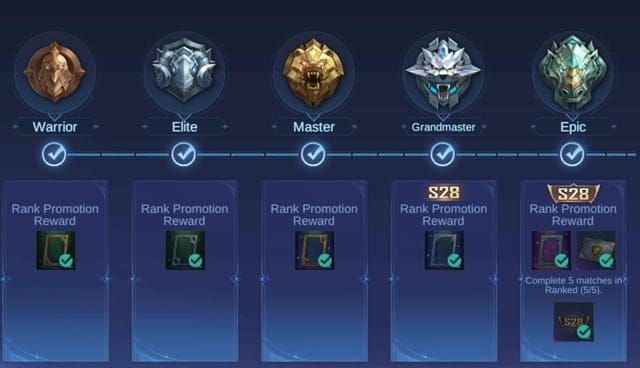
Epic and Legend? They’re the real gatekeepers. Each requires 25 stars across 5 divisions, and every loss costs you a star. No mercy.
Here’s something most guides won’t tell you—reliable diamond access isn’t just about convenience, it’s about maintaining momentum. When you’re on a winning streak and need that specific meta hero, delays kill your flow. top up mobile legends diamond malaysia instant services through BitTopup have become essential for serious climbers. Fast transactions, competitive pricing, and 24/7 support mean you’re never stuck waiting when opportunity strikes.
Understanding Mobile Legends Ranking System and Mythic Requirements
The Real Story Behind Rank Progression
Warrior through Elite? Those are your training wheels. Warrior gives you 3 divisions with 3 stars each—and here’s the kicker, no star loss protection for genuinely new players (though most of you reading this are probably way past that point). Elite bumps it up to 4 stars per division across 3 divisions.
But Master and Grandmaster start showing their teeth. Four divisions requiring 4-5 stars each, and suddenly those losses sting. Epic and Legend are where dreams go to die—5 divisions, 5 stars each, and every defeat sets you back.
What most players don’t realize is there’s an invisible MMR system running behind the scenes. Your KDA ratios, objective participation, damage output—it all matters. Get that MVP performance and you’re looking at bonus stars. Those Star Protection Cards from events? They’re basically get-out-of-jail-free cards with 100% effectiveness for 7 days.
Why Mythic Actually Matters (Beyond Bragging Rights)
The rewards are decent—20,000 Battle Points, 1,500 tickets, exclusive seasonal skins, and those precious MVP Star Protection Cards. But Mythical Glory and Immortal players get the real perks: exclusive tournaments, priority customer support, and global leaderboard recognition.
Fair warning though—season resets happen every 3 months, and they’re brutal. Most Mythic players drop back to Epic. It’s like Sisyphus, but with more toxic teammates.
Master Hero Selection for Solo Queue Success
The Meta Hierarchy That Actually Matters
Let’s talk numbers. Hayabusa sits at 51.47% win rate with an 82.65% ban rate. That ban rate isn’t coincidence—his Quad Shadow ultimate near walls creates escape routes that make him nearly ungankable. Combined with superior jungle clear and burst potential, he’s basically a solo queue cheat code.
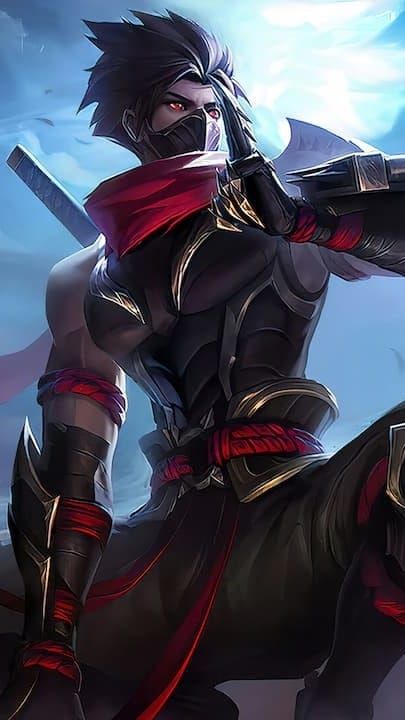
Granger leads marksmen despite his 72.73% ban rate (45.49% win rate when he slips through). His Death Sonata ultimate scales beautifully, and that early-game burst can snowball matches before enemies hit their power spikes. Wanwan offers mobility-focused gameplay if you’re into high-skill-ceiling plays, while Miya provides that reliable late-game insurance policy.
For mages, Cecilion’s 53.06% win rate tells the whole story. His mana regeneration builds enable infinite scaling—I’ve seen fed Cecilions one-shot entire teams in late game. Selena brings that lethal damage-mobility combo that makes enemy carries paranoid, and Chang’e? Her reduced ultimate cooldown (10-15 seconds) means constant team fight presence.
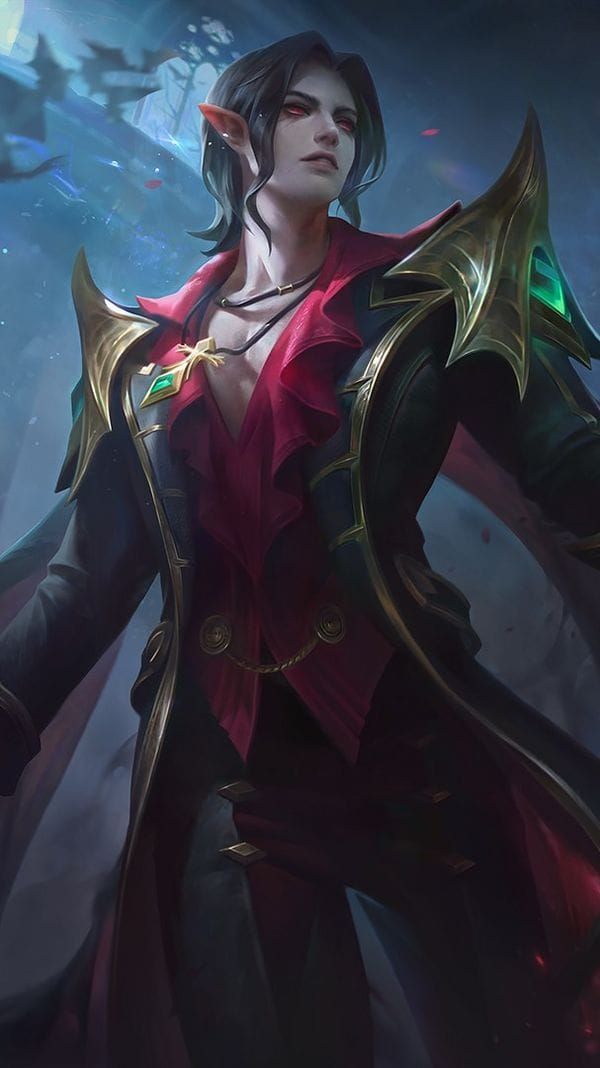
Tank meta has shifted hard toward Gloo post-revamp. His sustain mechanics and damage sharing make him nearly unkillable with proper positioning. Uranus scales HP regeneration from damage taken—counterintuitive but devastatingly effective.
The Versatility Game-Changer
Here’s where smart players separate themselves: versatile picks. Lukas can jungle, EXP lane, or roam effectively. His gap-closer stuns and base-sending potential when fed make him a nightmare for enemy positioning. Mathilda exemplifies support versatility—utility, burst, mobility through jump mechanics, plus that eagle ultimate for both peel and dive scenarios.
Speaking of versatility, maintaining a diverse hero pool requires investment. cheap mlbb diamond reload malaysia options through BitTopup keep your hero acquisition costs manageable. Their competitive pricing and instant delivery mean you can adapt to meta shifts without breaking the bank.
Comfort vs Meta: The Eternal Dilemma
Look, I get it. Your Silvanna feels unstoppable with that spell vamp sustain across EXP/roam positions. Saber’s simple ultimate execution gives you consistent results. Comfort picks reduce mechanical errors during clutch moments.
But those meta statistics exist for a reason. Hayabusa’s ban rate screams overpowered, while Cecilion’s win rate proves reliability. The sweet spot? Master 2-3 meta heroes per role while keeping comfort picks as backup.
Easy execution heroes facilitate climbs: Chang’e enables high-range safety, Granger provides early burst without complex combos, Gatotkaca offers 1v5 potential through passive scaling. Sometimes simple is better.
Optimize Your Draft Phase Strategy
The Psychology of Picks and Bans
Draft Pick mode is chess, not checkers. Ten total bans (5 per team) create strategic depth most players ignore. First-phase bans should target solo carry potential: Hayabusa, Fanny (47.44% win rate, 88.23% ban rate), Joy (49.95% win rate, 82.15% ban rate). These heroes can single-handedly flip matches regardless of team coordination.
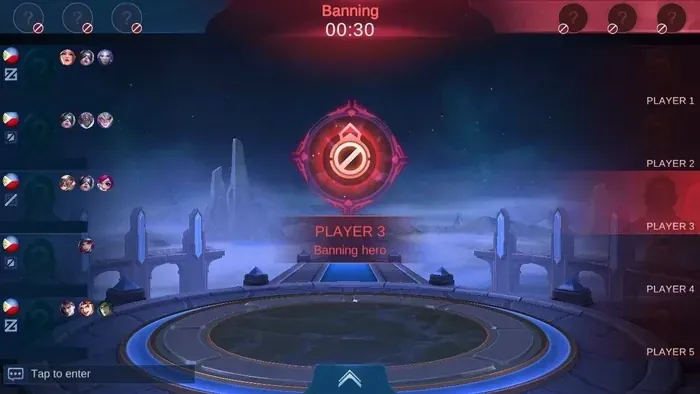
First-pick strategy? Go versatile. Lukas, Mathilda, Gatotkaca—heroes that conceal your actual strategy while securing meta strength. Don’t reveal your hand early. Let enemies commit first, then counter-pick accordingly.
Team Composition Science
Successful compositions balance four elements: initiation, damage output, sustain, and objective control. Dive compositions pair mobility heroes (Martis, Chou) with CC tanks (Tigreal) for coordinated destruction. Poke compositions use Chang’e and Brody for long-range harassment, controlling engagement timing.
Counter-picking principles are straightforward but often ignored. Sustain beats poke damage. Percentage-based damage melts tank-heavy lineups. Mobility counters immobile carries. Against CC-heavy teams, prioritize cleanse effects or immunity frames through heroes like Joy. Against glass cannon compositions, assassins exploit positioning mistakes.
Perfect Your Gameplay Fundamentals
Map Awareness: The Skill That Separates Ranks
Check your minimap every 5-10 seconds. Not occasionally—religiously. Track enemy positions, predict rotation patterns, ping ‘Missing’ the instant enemies disappear. This isn’t optional at higher ranks.
Ward placement at jungle entrances and river positions reveals enemy movement patterns. Before major objectives—Turtle at 2:00, Lord at 8:00+—verify enemy positions. Ambush scenarios end ranking streaks faster than anything else.
Study your replays. I know it’s boring, but awareness gaps become obvious in hindsight: missed gank warnings, poor rotation timing, inadequate vision control. Fix these and watch your win rate climb.
Positioning: The Art of Not Dying Stupidly
Tanks initiate from frontline, creating space while absorbing abilities. Marksmen maintain maximum range behind protection—survival trumps aggressive positioning every time. Assassins approach through flanks, targeting isolated backline carries after engagement chaos begins.
Engage with advantages: 2+ level leads, 1000+ gold advantages. Retreat from unfavorable scenarios: CC chain setups, numerical disadvantages, missing ultimates. Post-teamfight objectives matter—push towers during enemy respawn timers.
Objective Priority: What Actually Wins Games
Early game is about experience absorption. Stay within proximity range for 70% XP from minion waves (melee 40 XP, caster 50 XP, siege 70 XP every 30 seconds). Junglers should complete first clear before ganking—level 4 power spikes matter more than early gank attempts.
Mid-game revolves around Epic Monsters. Turtle provides approximately 200 XP and 200 gold per ally. Lord offers massive pushing power and team buffs. Late-game emphasizes team fight participation for carries—200+ XP per kill or assist adds up quickly.
Prioritize towers over kills when possible. Structural damage provides permanent map control. Kills are temporary; map control is forever.
Emblem and Build Optimization Guide
Emblem Investment: The Long-Term Play
Assassin emblems prioritize burst through ability power or physical attack enhancement—perfect for heroes like Hayabusa requiring quick elimination potential. Fighter emblems emphasize sustain via lifesteal and spell vamp for extended trades and jungle sustainability. Tank emblems focus on durability: HP bonuses, cooldown reduction, crowd control enhancement.
Talent allocation should reflect ranking priorities. Damage-focused talents enable solo carry potential. Utility talents support team-oriented gameplay. High-level emblem investment provides substantial statistical advantages—emblem farming pays dividends for serious ranked players.
Adaptive Itemization: Beyond Cookie-Cutter Builds
Core items provide foundation damage and utility, but situational adaptations determine outcomes. Hayabusa benefits from cooldown reduction and lifesteal through Endless Battle for sustained jungle farming. Mid-game adjustments matter: Athena’s Shield against magic damage, Blade Armor against physical threats.
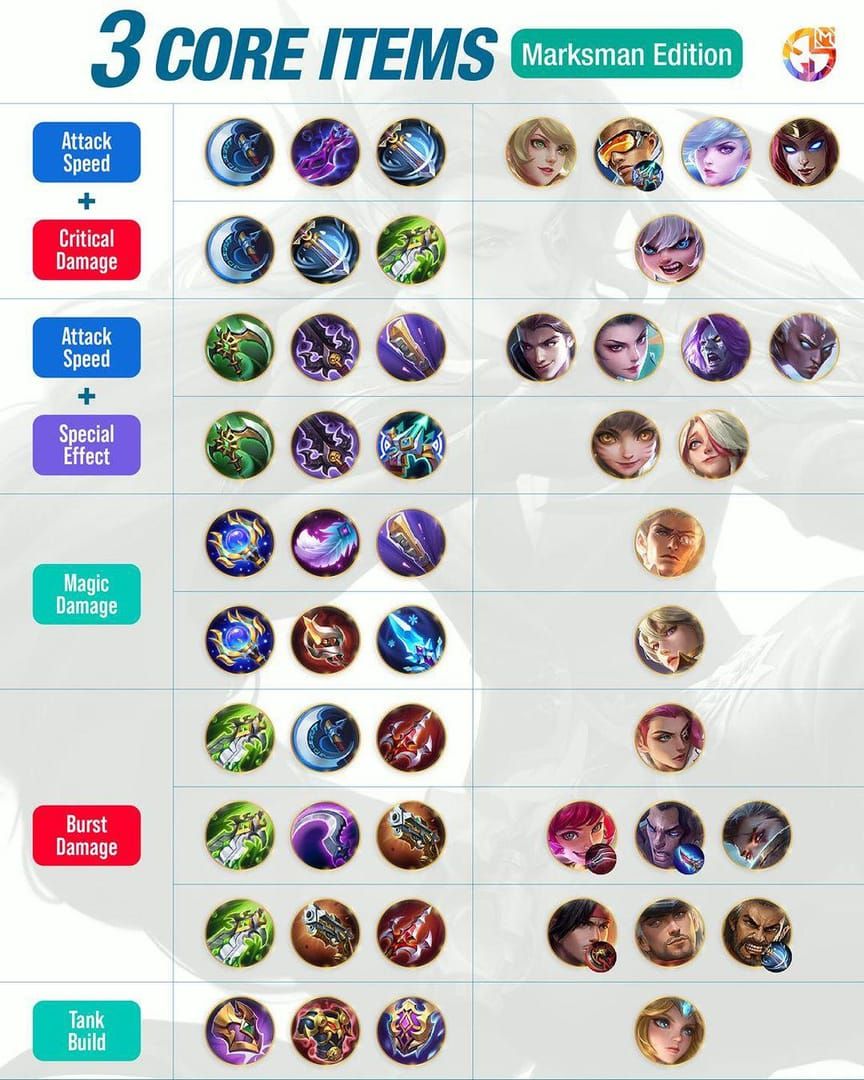
Marksmen require attack speed and critical foundations. Windtalker and Blade of Despair give Granger burst potential, while Golden Staff and Demon Hunter Sword enable Karrie’s true damage scaling against tanks. Tank itemization emphasizes role-specific needs: Warrior Boots and Oracle maximize Hylos’s HP/mana conversion efficiency.
Communication and Team Coordination
The Language of Pings
Master essential combinations: Attack followed by Gather signals coordinated ganks. Retreat with Danger warns of incoming threats. Use Missing immediately when enemies leave vision—this information saves lives.
Objective coordination requires clear communication. Ping Turtle or Lord 10-15 seconds before attempting. Jungle coordination involves pinging gank intentions before approaching lanes, ensuring teammates prepare for engagement.
Request specific assistance: ping low-health enemies for cleanup, dangerous areas requiring vision. Avoid spam pinging—it creates confusion and frustration.
Leadership Without Toxicity
Treat teammates as strategic assets. Use their positioning as bait for cleanup kills. Coordinate around their strengths while compensating for weaknesses. Guide through example: demonstrate proper positioning, objective timing, item builds.
Report toxic behavior without engaging. Mute disruptive players immediately. Arguments don’t win games—good plays do.
Mental Game and Consistency Tips
Tilt Recognition and Management
Recognize tilt symptoms: increased aggression, poor decision-making, blame-focused thinking. Take breaks after two consecutive losses. Reset mental state to avoid compounding mistakes through emotional gameplay.
Analyze losses objectively. Identify specific mistakes: positioning errors, missed opportunities, poor itemization. Focus on controllable factors rather than teammate performance.
Maintain perspective on ranking progression. Temporary setbacks are normal. Focus on improvement metrics beyond rank: KDA improvement, objective participation, mechanical execution. These predict future success more reliably than short-term results.
Strategic Scheduling
Play during off-peak hours for easier opponents and reduced queue times. Avoid peak evening hours when competitive players are most active. Weekend mornings often provide favorable matchmaking with casual players, while weekday evenings attract serious grinders.
Season timing affects difficulty. Early season features compressed skill ranges—former Mythic players stuck in Epic ranks. Late season provides more accurate skill-based matchmaking. Plan intensive sessions during optimal windows for maximum efficiency.
Advanced Solo Queue Strategies
Role-Specific Carrying Techniques
Jungle carries like Hayabusa focus on efficient farming, strategic ganking, objective control. Prioritize level 4 power spikes, secure Epic Monsters with proper timing, maintain vision control. Marksman carries emphasize positioning and late-game scaling—survive early game through conservative positioning, farm efficiently for core items.
Tank carries require leadership and initiation timing. Create opportunities through proper engagement timing, protect carries through positioning and ability usage, coordinate team movements through clear communication. Tank impact multiplies team effectiveness rather than providing individual dominance.
Comeback Mechanics Mastery
Bounty gold from killing fed enemies provides substantial economic swings. Experience catch-up mechanics help underleveled players reach competitive power levels. Focus on safe farming and avoiding further deaths when behind. Objective trading becomes crucial—trade outer towers for Epic Monster control.
Late-game scaling heroes like Cecilion or Granger can overcome early deficits through superior team fight impact. Defensive itemization enables survival during comeback attempts—prioritize survival over damage optimization when significantly behind.
Common Ranking Mistakes to Avoid
Draft Phase Disasters
Unbalanced team compositions lacking tanks, supports, or damage dealers doom matches before they start. Communicate role preferences early to prevent last-second scrambling and suboptimal picks.
Counter-picking requires understanding matchup dynamics. Don’t pick immobile heroes against high-mobility teams. Don’t pick squishy heroes against dive compositions. If enemies pick CC-heavy heroes, prioritize cleanse effects or immunity frames.
Gameplay Misconceptions That Kill Climbs
Prioritizing kills over objectives represents fundamental misunderstanding of victory conditions. Towers, Epic Monsters, and map control provide permanent advantages. Kills offer temporary gold and experience.
Overextending without vision control causes unnecessary deaths and momentum loss. Build defensive items against burst damage, anti-heal items against sustain heroes, penetration items against tank-heavy teams. Flexibility in itemization provides significant competitive advantages over static build paths.
FAQ
How long does it take to reach Mythic rank? Realistically? 200-400 matches depending on skill level and win rate. Players maintaining 60%+ win rates achieve Mythic in 150-200 games, while 55% win rates may need 300+ matches. Don’t rush it—consistency beats speed.
Which heroes are easiest for solo queue ranking? Silvanna (EXP/roam), Chang’e (mage), Granger (marksman), Saber (assassin), and Gatotkaca (tank) offer low skill requirements with high impact potential. Simple mechanics, reliable results.
How does star protection work? Star Protection Cards prevent star loss on defeats with 100% effectiveness for 7 days. Lower ranks provide automatic protection—Warrior players never lose stars. Use them strategically during ranking pushes.
What emblem setup is best for ranking? Prioritize damage-focused emblems for solo carry potential: Assassin emblem for burst heroes, Fighter emblem for sustain, Mage emblem for ability power scaling. Invest in high-level emblems—the stat advantages are significant.
How to improve map awareness? Check minimap every 5-10 seconds, ping missing enemies immediately, place wards at jungle entrances. Practice in Classic mode until it becomes automatic. This skill alone can boost your rank significantly.
What’s the best time to play ranked matches? Off-peak hours (morning/early afternoon) provide easier matchmaking. Avoid peak evening hours when competitive players are most active. Weekend mornings are often goldmines for ranking up.


















